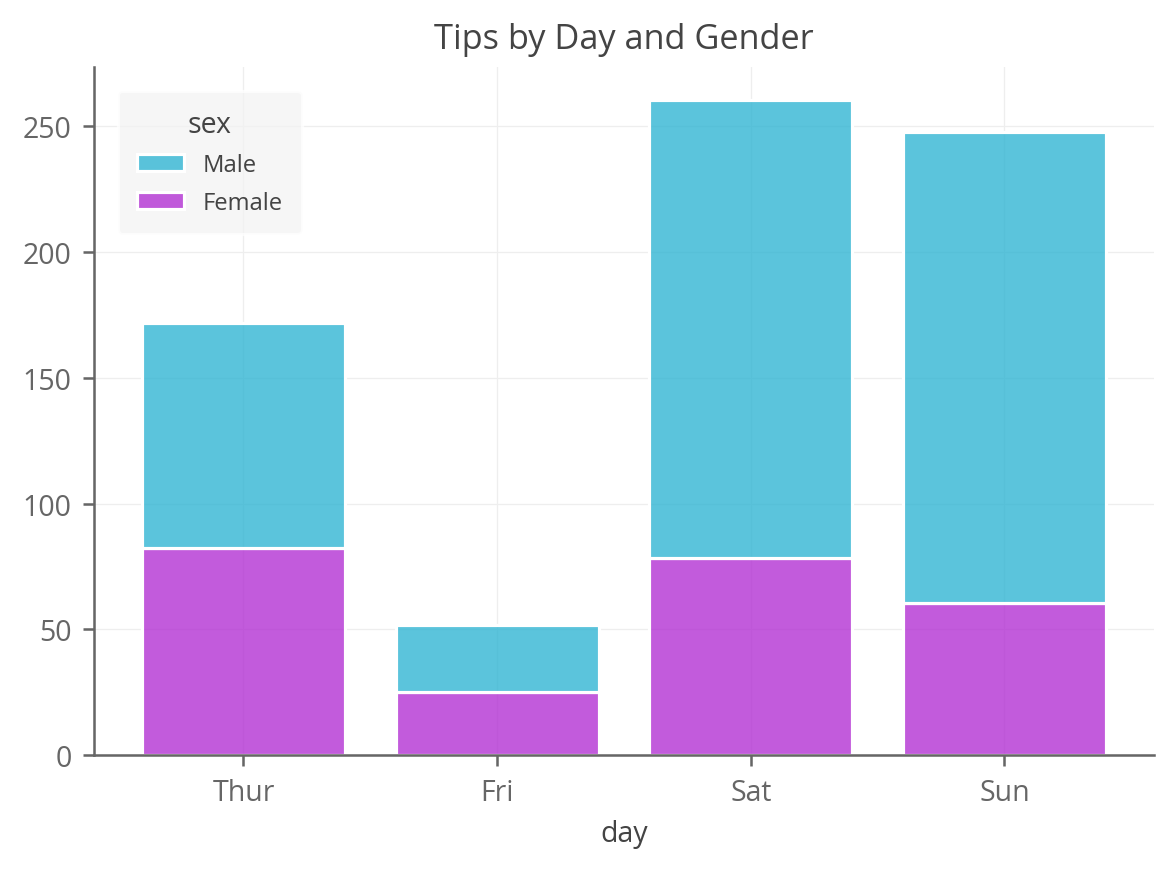

The right-most column will contain the lengths of the primary bars. Bars are built across rows: when the stacked bar chart is generated, each primary bar will have a total length be the sum across its corresponding row.įor certain tools, an intermediate step for creating a stacked bar chart may require computing cumulative sums across each row. The main cell values indicate the length of each sub-bar in the plot. Each column after the first will then correspond with one level of the secondary categorical variable. Values down the first column indicate levels of the primary categorical variable. Example of data structure Storeĭata for a stacked bar chart is typically formatted into a table with three or more columns. For example, if we’re interested in seeing an age breakdown by product department, this is a good reason to set the purely categorical variable (department) as the primary. Domain knowledge, visualization objectives, and experimentation will show you the best hierarchy for the categorical variables for each case. Ultimately, these rules of thumb are only general guides. As another consideration, variables with more levels are generally better as primary variables we want to limit the number of secondary levels to a fairly small amount to make the stack breakdowns easier to read. gender, department, geographical region) usually don’t have as strong a weight for being considered as primary. Purely label-style categorical variables (e.g. Next in the general hierarchy are other ordered or numeric variables, like age ranges (18-24, 25-34, 35-44, etc.) or ranked scores (agreement on scale from 1-7). monthly summaries 20XX-Jan, 20XX-Feb, 20XX-Mar, etc.) then that will usually be a clear choice for the primary categorical.
#Am charts stack bar chart post units how to
The most ‘important’ variable should be the primary use domain knowledge and the specific type of categorical variables to make a decision on how to assign your categorical variables.įor example, if one categorical variable depicts temporal data (e.g. One important consideration in building a stacked bar chart is to decide which of the two categorical variables will be the primary variable (dictating major axis positions and overall bar lengths) and which will be the secondary (dictating how each primary bar will be subdivided). The total length of each stacked bar is the same as before, but now we can see how the secondary groups contributed to that total.

Each bar is now comprised of a number of sub-bars, each one corresponding with a level of a secondary categorical variable. We want to move to a stacked bar chart when we care about the relative decomposition of each primary bar based on the levels of a second categorical variable. A stacked bar chart also achieves this objective, but also targets a second goal.

One bar is plotted for each level of the categorical variable, each bar’s length indicating numeric value. The main objective of a standard bar chart is to compare numeric values between levels of a categorical variable. The Strawberry Mall location appears to have a lower proportion of revenue attributed to equipment, while equipment has a larger share for Peach St. We can see that for most locations, clothing is quite a bit larger in sales than equipment, which in turn is larger than accessories. Each bar is subdivided based on levels of the second categorical variable, department. location has the highest revenue and Apple Rd. The primary categorical variable is store location: we can see from the sorted overall bar heights that the Cherry St. The stacked bar chart above depicts revenue from a fictional fitness retailer for a particular period of time, across two categorical variables: store location and department. Each bar in a standard bar chart is divided into a number of sub-bars stacked end to end, each one corresponding to a level of the second categorical variable. The stacked bar chart (aka stacked bar graph) extends the standard bar chart from looking at numeric values across one categorical variable to two.


 0 kommentar(er)
0 kommentar(er)
